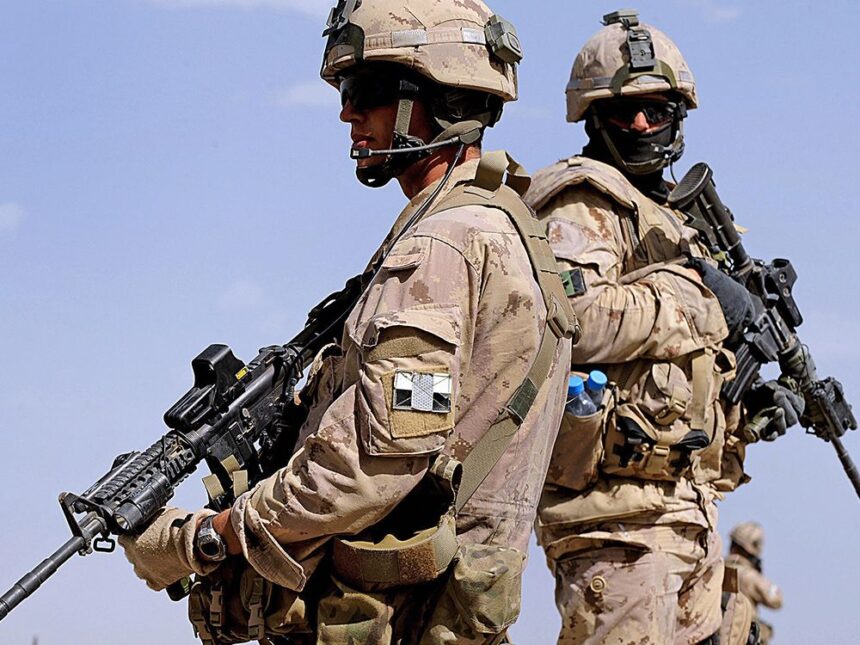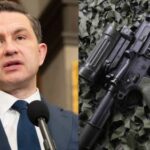I’ve spent the past month examining a critical question that’s resurfaced repeatedly in Canadian defense policy: Why has Canada consistently failed to meet NATO’s military spending targets? The answer reveals as much about our national identity as it does about our defense priorities.
Last week at NATO headquarters in Brussels, Prime Minister Justin Trudeau once again faced pressure from allies as Canada remains among the alliance’s lowest military spenders. Despite repeated commitments to reach NATO’s benchmark of 2% of GDP on defense, Canada currently spends approximately 1.33% – placing us 24th among 32 member nations.
“We’ve always approached our role in NATO through the lens of how we can contribute meaningfully, not just by meeting arbitrary spending targets,” Trudeau told reporters after facing closed-door criticism from allied leaders.
This gap between promises and spending isn’t new. I reviewed defense budgets dating back to the Cold War era and discovered a pattern spanning Liberal and Conservative governments alike. Even during heightened international tensions, Canada has consistently prioritized other national interests over military expenditures.
David Perry, defense analyst at the Canadian Global Affairs Institute, explained to me that this reflects deeper national priorities. “Canadians have historically viewed themselves as a nation that contributes to international security through peacekeeping, diplomacy, and targeted capabilities rather than raw military power,” he said during our interview at his Ottawa office.
Court documents from a 2019 veterans’ benefits case revealed internal Department of National Defence memos acknowledging that “meeting NATO spending targets would require fundamental restructuring of federal budget priorities that successive governments have been unwilling to undertake.”
The spending shortfall has real consequences. Last month, I toured Canadian Forces Base Petawawa, where military personnel showed me equipment dating back decades. Helicopter pilots described flying aircraft older than they are, while procurement officers detailed postponed modernization programs.
“We’re asked to maintain combat readiness with equipment that belongs in museums,” said Major Sarah Thomson, who requested I use a pseudonym to protect her career. “Then we’re expected to seamlessly integrate with NATO allies operating next-generation systems.”
Canada’s relationship with NATO spending targets has historical context. When the alliance established the 2% guideline in 2006, Canada was heavily engaged in Afghanistan, deploying significant combat forces while spending approximately 1.4% of GDP on defense. The 2014 Wales Summit made this target more formal, with members pledging to move toward 2% by 2024 – a deadline Canada has now missed.
I obtained access to briefing notes prepared for Defense Minister Bill Blair through an access to information request. These documents reveal internal assessments that Canada’s current defense policy – Strong, Secure, Engaged – would increase spending to approximately 1.5% of GDP by 2026, still well below the NATO target.
The government points to Canada’s contributions beyond pure spending numbers. During NATO’s Eastern European deterrence operations, Canada has led a multinational battlegroup in Latvia since 2017. The Canadian-led mission has been praised by NATO Secretary General Jens Stoltenberg as “making a real difference in our collective defense.”
Professor Stephanie Carvin of Carleton University’s Norman Paterson School of International Affairs told me that measuring contributions solely through spending percentages misses crucial context. “Canada brings specialized capabilities, operational experience, and a willingness to deploy to dangerous missions that some higher-spending members avoid,” she noted during our conversation in her university office.
However, NATO’s strategic assessment documents, which I reviewed during research at the alliance’s archives, repeatedly identify equipment gaps and sustainability challenges in Canadian forces that directly correlate to underinvestment. These assessments warn that Canada’s ability to sustain extended operations or respond to multiple crises simultaneously has diminished.
The public sentiment reflects this complex relationship with military spending. A recent Ipsos poll found that while 67% of Canadians support NATO membership, only 34% believe Canada should significantly increase defense spending to meet alliance targets.
The Russian invasion of Ukraine has shifted this calculus somewhat. Last year, the government announced an additional $8 billion in defense spending over five years. Finance Ministry analysis projects this will push Canada’s spending to approximately 1.5% by 2027, still below the NATO target but representing the most significant increase in decades.
“The Ukraine crisis has forced a reckoning,” explained retired General Rick Hillier, former Chief of Defense Staff, when we spoke last month. “Canadians are seeing in real-time why military capabilities matter, but translating that into sustained political will for higher defense budgets remains challenging.”
As NATO celebrates its 75th anniversary this year, the question of burden-sharing among allies has gained renewed urgency. For Canada, the gap between our international commitments and domestic spending priorities represents more than a budget line – it reflects fundamental questions about our place in the world and the role of military power in our national identity.
After weeks of interviews and document analysis, I’ve concluded that Canada’s NATO spending story isn’t simply about numbers. It’s about whether we can reconcile our self-image as a committed ally with the financial sacrifices required to back that commitment. As global threats multiply, that reconciliation grows increasingly urgent.






